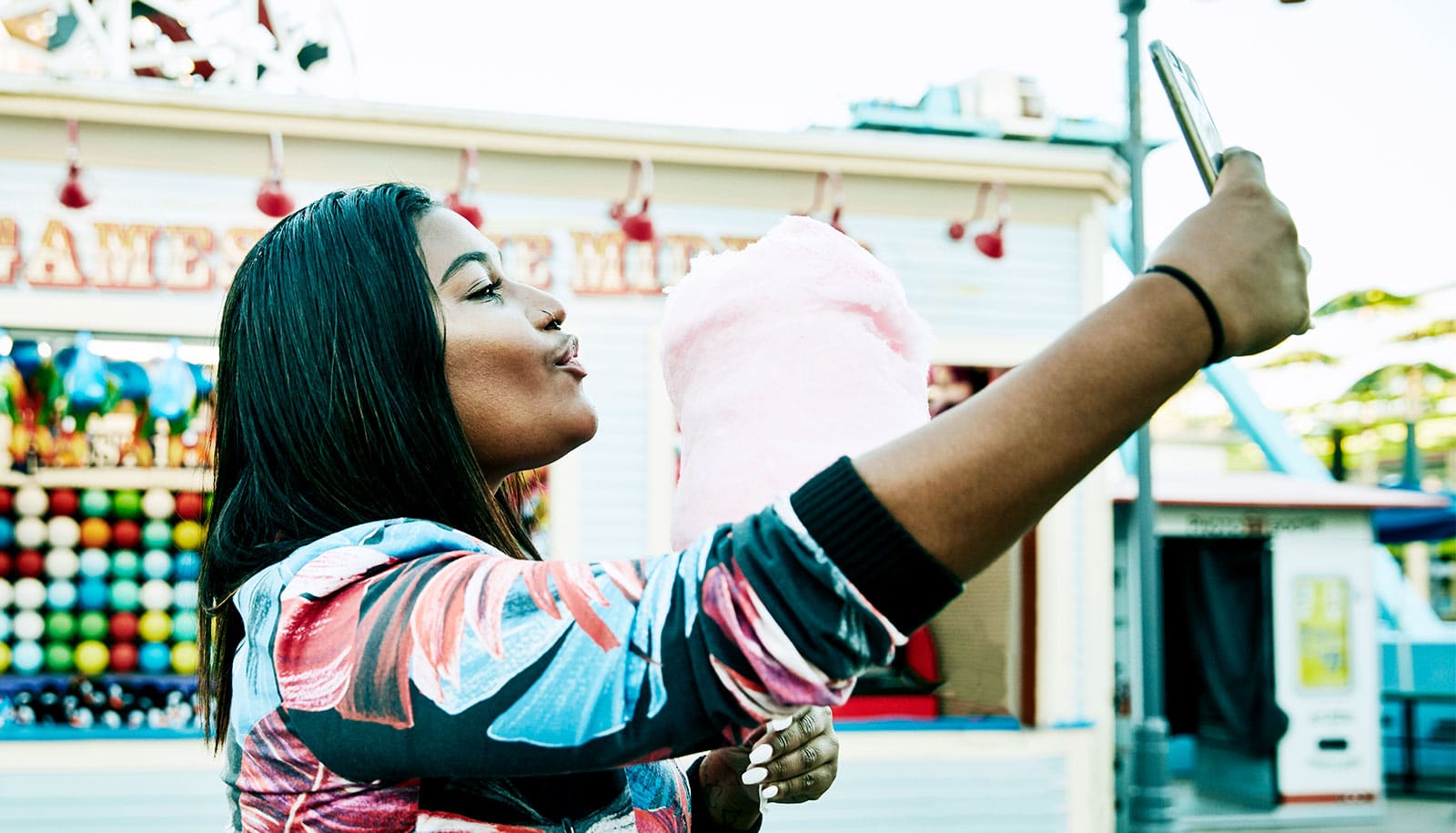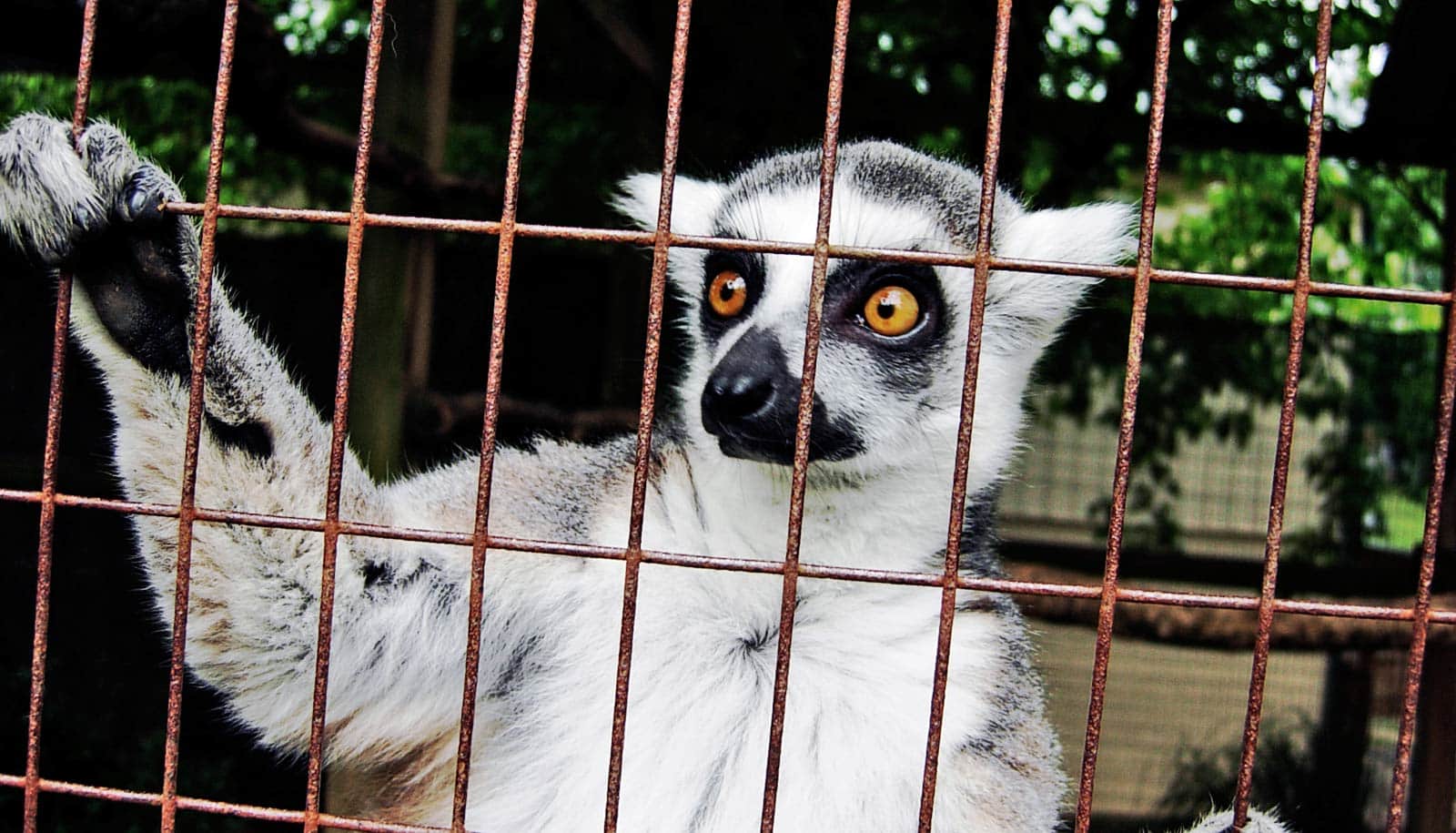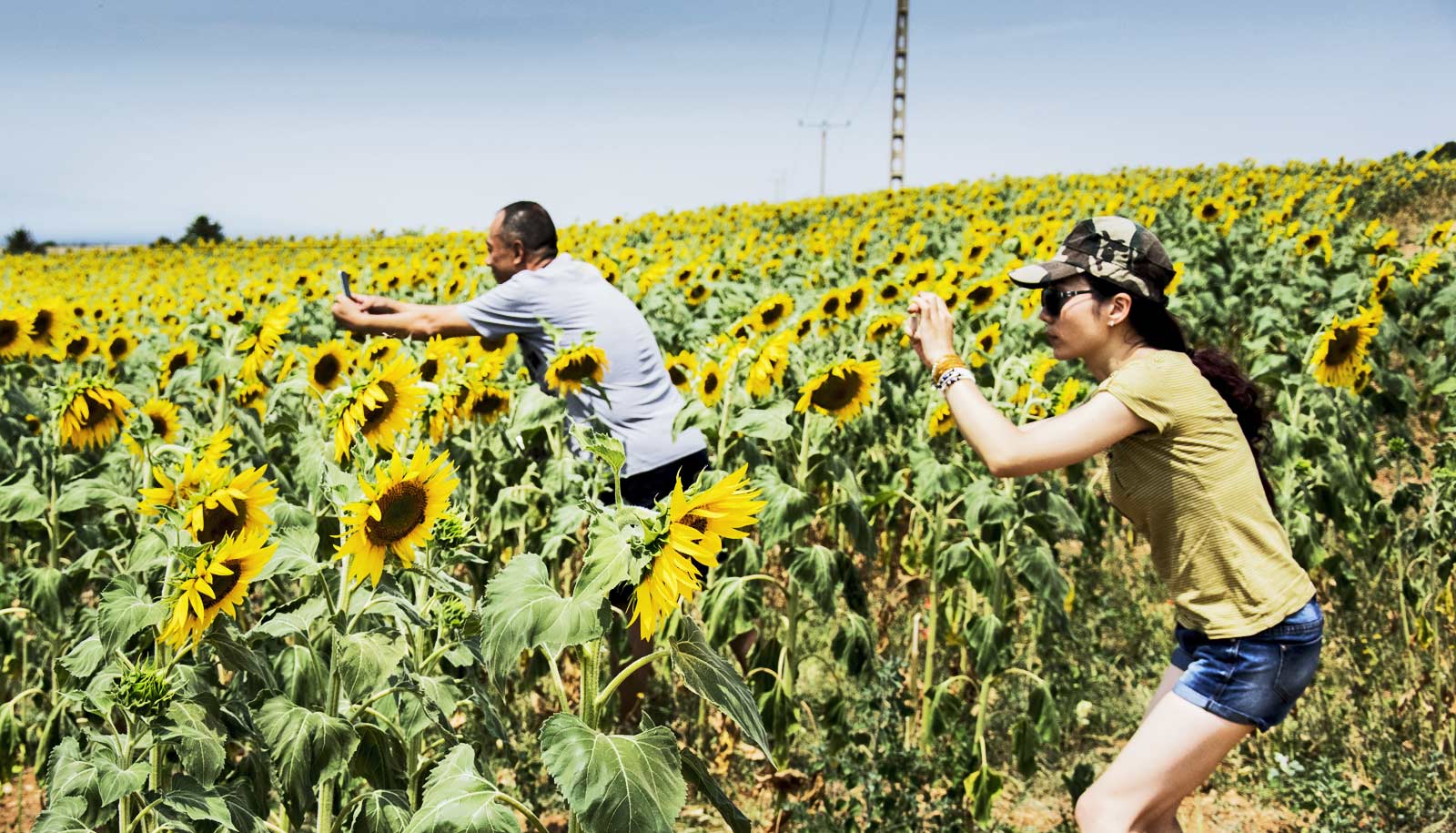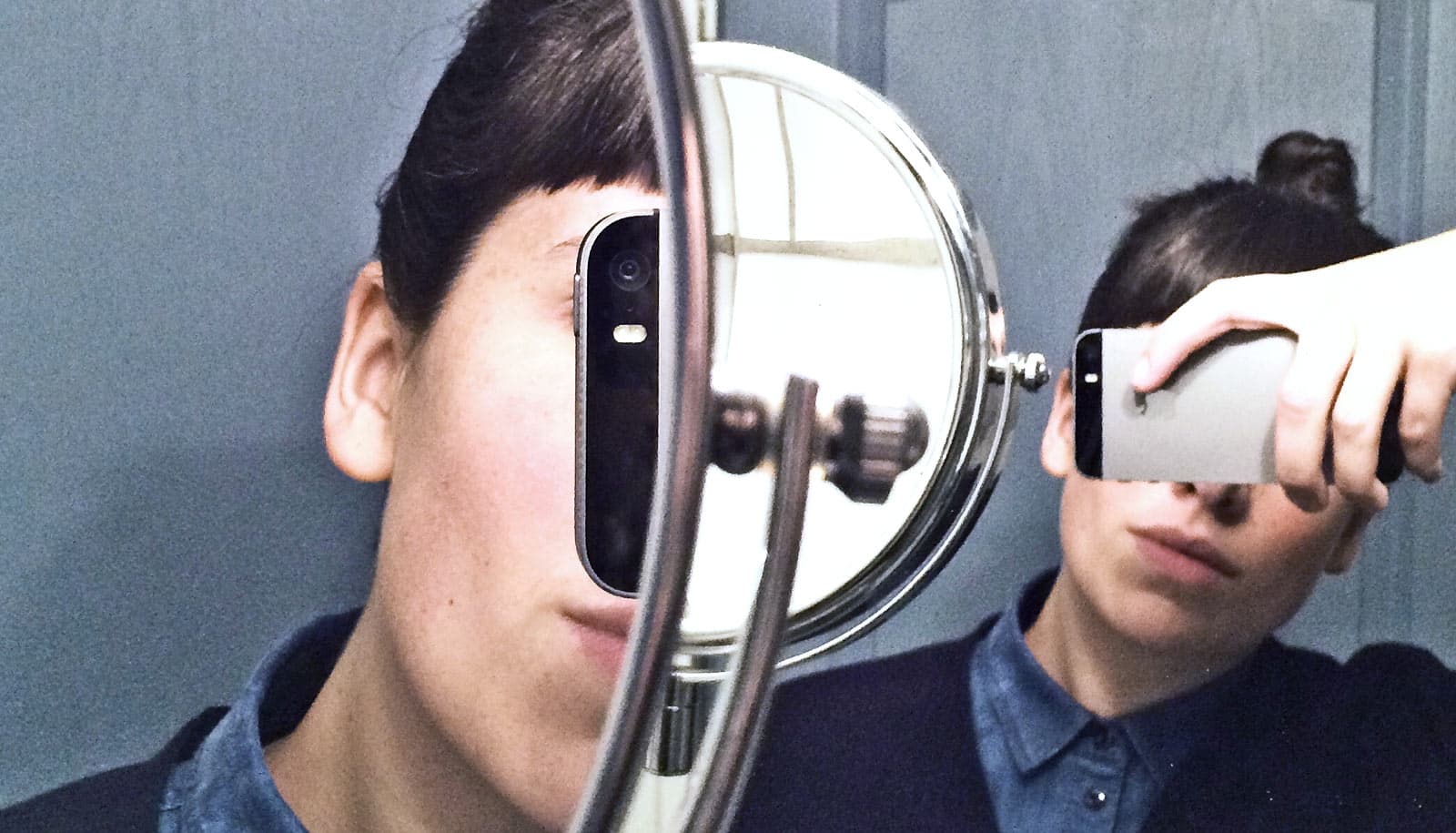Taking pictures for the purpose of sharing can detract from the enjoyment of the experience, according to new research.
While other studies have focused on the emotions—often of pride and joy—that result when we see likes and comments on our Facebook or Instagram posts, a new study in the Journal of Consumer Research is the first to explore how the presence of the “sharing goal” can trigger anxiety at the moment the photos are taken, even if that’s long before actual sharing occurs.
In a series of experiments both in the field—including among tourists waiting in line to take photos of the “Rocky” statue on the steps of the Philadelphia Museum of Art—and in lab setups that mimicked first-hand travel experiences such as city bus tours or safaris, Alixandra Barasch, an assistant professor of marketing at New York University, found that participants who took photos primarily for the purpose of sharing experienced greater “self-presentational concern” than those who took photos as personal keepsakes instead.
“Any time you’re trying to manage your impression, you’re going to get in between yourself and the experience,” Barasch explains.
Public vs. private
In one experiment, the researchers assigned students who were about to celebrate Christmas one of two tasks: either to take photos for a personal album they would keep for themselves to remember and look back on the holiday, or to take photos for an album to post on Facebook or other social media.
The participants who took photos to share reported that they enjoyed the experience less than those who took them for a personal album—and were more likely to describe their memory of the celebration as though it were from the perspective of an outsider observing the scene.
“…when people are taking photos to share on social media, they’re actually trying to put themselves into a third-person perspective…”
Even more telling were differences in the content of the photos themselves: Those snapping away for social media included a higher proportion of photos of themselves, posed shots, photos of people smiling, and photos of items—like ornaments and stockings—typically associated with Christmas.
“When you take pictures for yourself, you don’t need little cues to signal that it was Christmas, because you were there,” Barasch says. “But when people are taking photos to share on social media, they’re actually trying to put themselves into a third-person perspective—not the lens through which they originally saw the experience.”
Barasch is currently exploring a related phenomenon—the tendency among social media users to choose between experiences based on how “share-worthy” they are—that is reflected in phrases like “doing it for the ‘gram.”
More people, more problems?
Not all of this is new, of course. Psychologists have known for decades that people care about impression management and may become anxious or alter their behavior when thinking about how others will perceive them. And almost as long as there have been cameras, there have been tourists taking pictures to show off when they get home.
So why blame Facebook for increased anxiety about how we appear? One reason, Barasch suggests, is that whereas just a handful of family members and neighbors might have viewed a vacation slideshow in the past, we often broadcast social media posts to hundreds or even thousands of friends and acquaintances with varying levels of closeness.
“It’s making it so that we feel like we have to be curators of our identities on these platforms…”
A lab experiment from her study tested the effect of widening that network by asking participants viewing a virtual London bus tour to take photos in three scenarios: simply for themselves, to share with a GooglePlus circle of 10 close friends, or to share with a GooglePlus circle of 10 acquaintances. Those tasked with capturing images to share with acquaintances felt more self-presentational concern, and enjoyed the experience less than the other two groups. However, those documenting it for close friends felt more engaged with the experience than those sharing with acquaintances, and just as engaged as those only taking photos for themselves.
It may be the ability to broadcast so widely, Barasch’s research shows, that’s changing the photo-taking process.
“It’s making it so that we feel like we have to be curators of our identities on these platforms,” she says. For people under 40—including Barasch’s own students—the pressure can feel especially acute. “When I talk to younger people about my research, it really resonates,” she adds.
Sharing and having a good time
As a marketing researcher, Barasch is particularly interested in the way these shifting attitudes could shape business strategies for engaging with consumers on social media. Whereas many restaurants, hotels, and museums prominently display hashtags urging visitors to capture images to share, her research shows that this approach can actually backfire, by making customers nervous and less likely to have a good time.
“I really try to push companies to think about the ways that they can wait to activate the sharing goal until after the experience is over,” she says, noting that people who have had fun are more likely to spread the word on their own.
“Maybe on the way out is the time to remind people to post the dozens of photos that they may have taken anyway, when the sharing goal won’t undermine enjoyment of the experience itself.”
As for her own habits, Barasch says that her professional work on the topic hasn’t diminished her personal appetite for taking photos—a process that her other research suggests can boost memory of visual details. That said, she usually keeps them to herself rather than broadcasting on a public profile, relying instead on apps that periodically surface old snapshots that she then texts to particular friends as a way to reminisce or share a laugh.
“Sharing can be enjoyable,” says Barasch, “but if we can separate it and also have moments to ourselves and for our own memories, we can get the best of both worlds.”
Source: New York University



